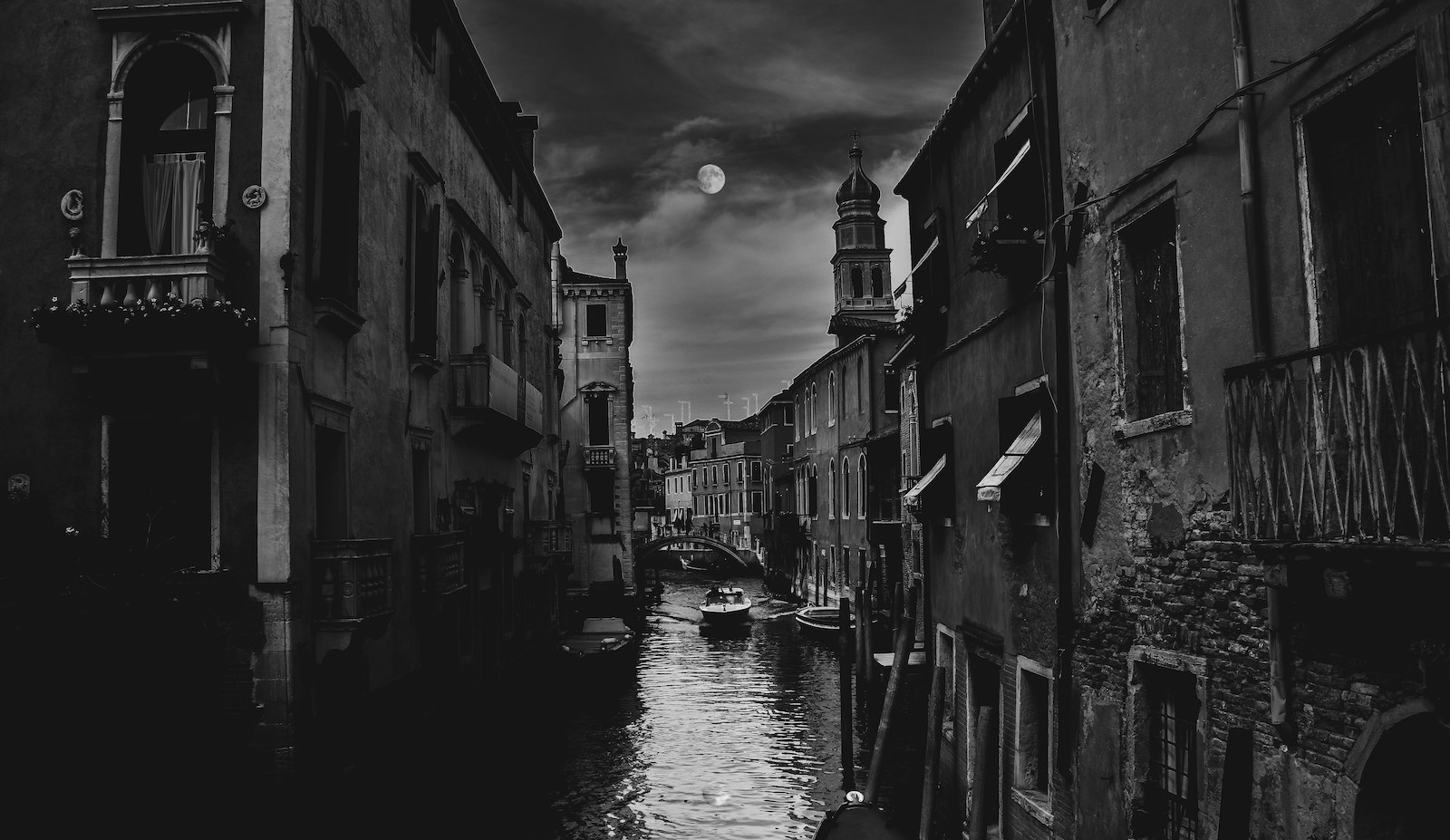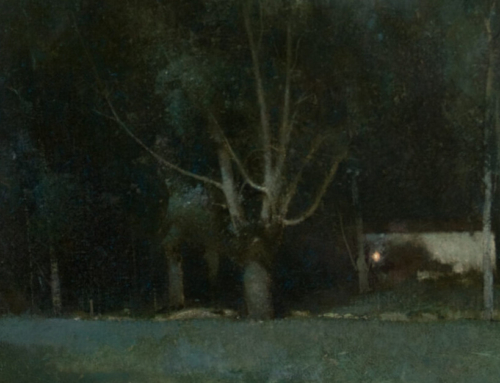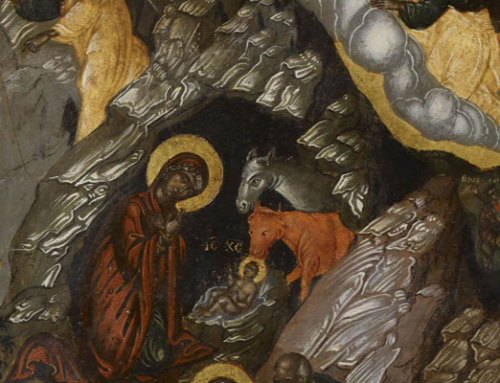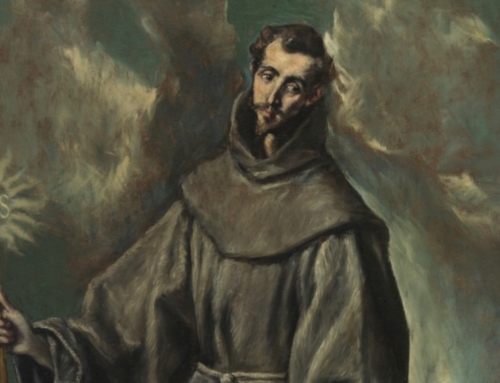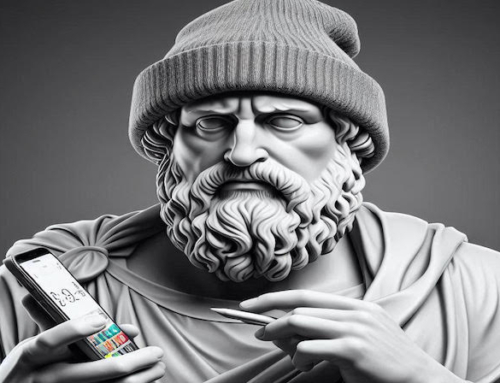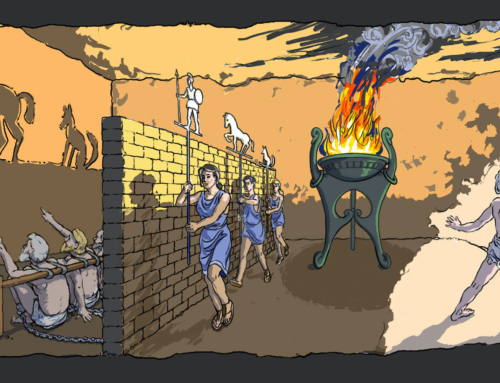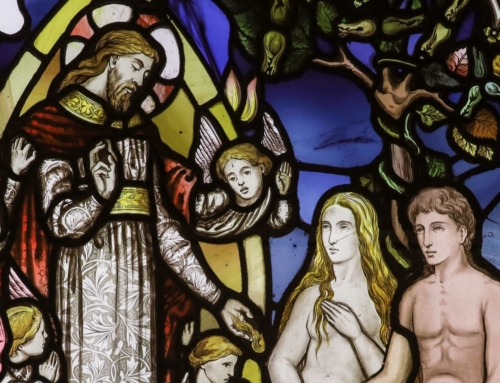It was already dark when they arrived at the palazzo, just as the rain began to fall. It was a grand house–one of the finest palazzos in this area of Venice. Or at least it had been in its day. Lately it had fallen into disrepair. The dim lighting revealed the slow encroachment of mold upon the decaying walls…. Or maybe the dreary aspect was just because night had fallen.
When the medium arrived for the seance, they gathered upstairs in the room of the deceased daughter. Some of the observers who gathered there were initially skeptical that such a meeting with the dead was possible. They knew better than to be spooked by demons or imaginary spirits. But then things began to happen in this old palazzo: the sudden crash of the chandelier… and some of them had heard a voice… Later they found the doctor lying dead on the floor upstairs… but the room had been locked…? All signs pointed to the workings of some dark spirit… The terrifying possibility dawned on them all that this place was really haunted.
Except, of course, our protagonist: Hercule Poirot.
At this point, I can hear some members of my audience interrupt: “Hey! You’re just retelling that Agatha Christie mystery novel-turned-motion picture “A Haunting in Venice!” True!
But if you didn’t watch “A Haunting in Venice” to celebrate Halloween last year, allow me to introduce to you its main character Hercule Poirot. The first thing you notice is his grand mustache and his dapper suit. And somehow you can tell that he is a clever man. Like Sherlock Holmes, Hercule Poirot is a man who trusts in the power of observation and logical deduction. But he seems slightly sad. In fact, he is sad. He revealed this much when he told the medium:
“I have lost my faith.”
“How sad for you,” she replied.
“Yes, it is most sad. The truth is sad.”
As they continued walking down the dim hallway he added:
“Please understand madam… I would welcome with open arms any honest sign of devil or demon or ghost, for if there is a ghost, there is a soul; if there is a soul, there is a God who made it; and if we have God we have everything…”
There we have it–he is sad because he is convinced there is no God. But it’s ironic–of all places, you’d expect atheism to pay off in a haunted house. In fact, it did pay off. Poirot kept his head, and figured out a real explanation for the night’s crimes, without recourse to the intervention of vengeful ghosts.
Like Poirot, many are convinced there is no God. If there were a God, why don’t we see signs of other-worldly activity?
They point to the progress of physical sciences over the last few centuries for vindication. When more primitive mankind was confronted by the mysterious workings of nature, it was quick to conclude that there must be a God, or gods, or spirits. But now science has figured things out and dispelled the mystery. Like Poirot, modern science has lifted the curtain of superstition: there is no more need to posit a God.
But lurking behind this view there is a faulty presupposition: that if the spiritual realm really exists, it must intrude into our material world. If I am to believe there is a God out there, I must see a sign. Give me a measurable and unexplainable violation of the laws of nature!
But the truth is, we already have a sign, right before our eyes. The very existence of the natural world is our sign. It’s a world that’s consistent and intelligible, where all its beings–great and small alike–follow the laws of cause and effect.
We don’t believe in a God who can only show his power by fiddling with a material world as if it weren’t already his own. No, our God made the world, and at every moment upholds it all in existence, down to every last atom. God doesn’t need a miracle to manifest his power, everything we see with our eyes is already downstream of his creative act. So, we don’t need to see (or imagine) a sign. God’s omnipotence is far greater than we can imagine, or see with our eyes.
We can applaud Mr. Hercule Poirot, and our scientific age, for dispelling the mysteries of the material world. But we won’t stop there, only to dwell in sadness. Instead, we’ll turn to contemplate the real Mystery: the God who made it.
✠
Photo by Leonardo Yip on Unsplash

